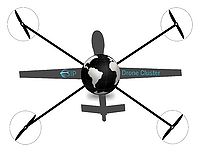|
Get Involved
- Email List: esip-drone (Drone List)
- Contact Chairs: [1] Lindsay Barbieri (Bar) [2] Jane Wyngaard
- Open Science Frameworks (OSF) project: See our projects and contribute to resources
- Telecons: Bi-Monthly, 3rd Thursday of the month at 4pm EDT, 1 PDT
- To join the Drones telecon from your computer, tablet or smartphone, click:
|
Resources
- Rolling Cluster Notes: [3]
- Can I fly a Drone? (see this page for information on FAA regulations, where you can fly, and resources for getting started).
- Since July 2016 the cluster has moved much of its activities to OSF. Comment, contribute, and use our resources to capture your own earth science data here.
- Software
- Resource Catalog (Catalog of Earth Science projects using drones, and comparisons of the tools, data formats, flights platforms, and sensors that they use).
- Projects: Contains all ESIP funded cluster projects projects, data, software, reports, and design documents. Note some project components are only released for public viewing after their completion data.
|
Activities
- Bi-Monthly telecons (3rd Thursday of the month) with updates, news from around the cluster, and discussion forums.
- Sessions at ESIP winter and summer meetings
- Collaboration with the ESIP Education Cluster
- ESIP funded prototype projects
|
News
- 2016-08-11: Next Telecon - 22 September 2016 (delayed 1 week for International Data week)
- 2016-07-28: Drone Cluster moves to using ESIP Open Science Framework as a primary operation platform:https://osf.io/nuvem/ Find our project updates, Resource Catalog, links to software resources and data, and contribute to the community with us.
- 2016-06-22: Summer meeting session proposal: Drones: Explore the Landscape (Technical & Physical)
- 2016-06-14: The drone cluster is excited to start using the ESIP Open Science Framework to share and collaborate. We will be moving all of our resources, data, code, and cluster work here. Come join us at: https://osf.io/nuvem/
- 2015-06-11: Drone Cluster session scheduled for this summer's meeting (link)
- 2015-01-08: Drone Cluster formed at the ESIP Meeting
|
Why Unmanned Aerial Systems [UASs]?
In response to a growing interest in the use of drones (unmanned aerial systems (UAS)) in the earth sciences, an ESIP cluster formed this year to focus on their development and use. While there are currently various challenges around using UAS, the existing and anticipated advantages mean that firstly the domain is swelling with innovation, and secondly that UASs are expected to become a standard piece of field equipment for scientists.
As a new cluster we are welcoming participants and input as to how we can best operate within ESIP.
UAS advantages over traditional approaches:
- Content on demand/currency of data
- Cost savings (10% of traditional methods)
- High resolutions possible (2.5cm)
- Turn around time - hours not months or years
- Improved Safety
- Lowered impact on the environment being monitored
- All of the above mean an increased ease of observation repeatability
Challenges:
- Steep learning curve
- Need for more reduced weight instrumentation
- Need for new data management and processing techniques, particularly open source options
- Regulations
